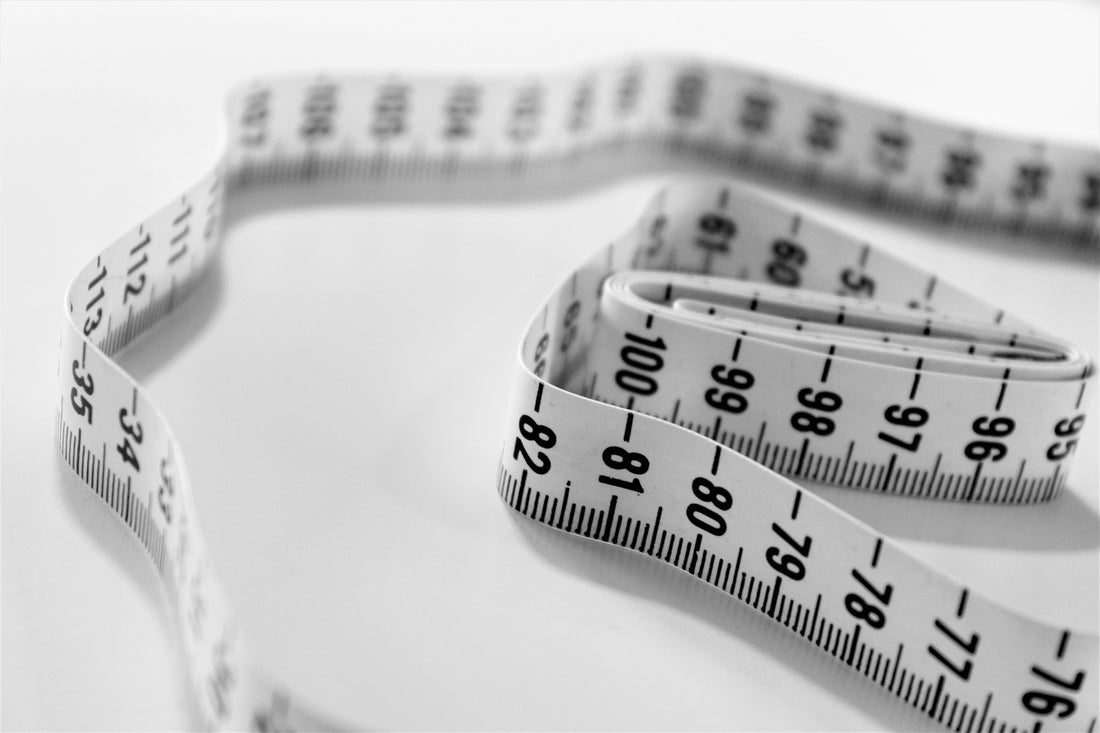We've all been there.
The first week or so into a new diet or exercise routine, the numbers on the scale start plummeting. It's invigorating, motivating, and, let's admit it, a bit shocking at first!
It feels like our body is shedding weight faster than a tree loses its leaves. It's almost suspiciously easy. But then, as the weeks progress, the weight loss begins to taper off, and we find ourselves working harder for each subsequent kilo.
So, what's happening here? Why does the body seem eager to drop those initial pounds? Before we dive headfirst into celebrating the initial decline of those pesky numbers, it's crucial to understand the science behind the "first five kilos" and your mates saying that “it’s just water weight”. Let’s address these claims with facts.
In doing so, we'll not only appreciate your body's processes but also set realistic expectations and strategies for your weight loss journey.
The Physiology of Weight Loss: An Overview
Transitioning from the anecdotes to the anatomy, let's delve into the actual physiological processes at play when we start our weight loss journey.
Beyond the surface-level fluctuations on our scales, intricate biological mechanisms are hard at work, determining the rate and nature of the weight we shed. Here's an overview of the fascinating world of weight loss from a physiological perspective.
How the Body Stores Energy
Out of all of the body's processes, energy storage and expenditure play leading roles. These mechanisms are vital for our survival, and understanding them can offer insights into our weight loss experiences. Similar to a mind-muscle connection, understanding your calorie-in, calorie-out equation will serve you well in the long run.
Here's a glance into how our bodies stow away energy for future use:
Fat Storage
Our primary long-term energy reserve, fat, is stored in fat cells. When we consume more calories than our body can use immediately, the surplus is converted and stored in these fat cells. This process ensures that energy is available during times of scarcity or increased demand. The more energy we store, the larger these cells become, leading to weight gain.
Glycogen Reserves
The body's short-term energy storage solution is glycogen—a carbohydrate stored predominantly in the liver and muscles. After a meal, when blood sugar levels rise, the body releases insulin, prompting cells to soak up sugar.
Once they have their fill, the liver and muscles start converting excess glucose into glycogen. However, the body's capacity to store glycogen is limited. When these reserves top up, any additional glucose gets converted into fat.
The Role of Water
Water plays an often-underestimated role in our weight. For every gram of glycogen stored, the body retains about three grams of water.
Why is that information important?
When we initially start the Cookie Diet with a light exercise regimen and our body begins to use these glycogen reserves, we experience a significant drop in weight due to the simultaneous loss of both glycogen and the bound water. This phenomenon partially explains the rapid weight loss many observe at the outset of their health journeys.
Recognising these fundamental storage mechanisms can help demystify the ebbs and flows we notice on our weight loss journey.
Now, to address the real question: how does water weight relate to our overall weight loss journey?
Understanding Water Weight
The body is composed of about 60% water, which plays numerous essential roles—from temperature regulation to nutrient transport. The amount of water retained can fluctuate daily based on various factors like caloric intake, hormone levels, and even the climate.
Water Weight vs Fat
At the start of a new diet or fitness regimen, especially those that restrict carbs, the body tends to use up its glycogen stores for energy. As mentioned before, each gram of glycogen comes with about three grams of water. So, as glycogen is depleted, a significant amount of water gets expelled from the body, leading to rapid weight loss in the initial stages. However, this is not fat loss; it's primarily water weight.
While the swift drop in water weight can be motivating, it's crucial to recognise that fat loss operates on a different timeline. Burning fat is a more gradual process, based on a consistent caloric deficit achieved through diet, exercise, or ideally, a combination of both.
Fat loss represents a genuine shift in body composition, culminating in lasting weight reduction and health benefits. Unlike the transient nature of water weight, which can easily fluctuate, fat loss requires time, persistence, and dedication.
Sodium and Water Retention
Sodium, commonly consumed in the form of table salt, can cause the body to retain more water. When you cut down on sodium intake with the Cookie Diet, you might notice a swift drop in weight due to reduced water retention.
The Bigger Picture
While losing water weight can be motivating because of the quick results on the scale, it's essential to understand that sustainable weight loss primarily focuses on reducing fat stores. Water weight fluctuations are a normal part of the body's operations, and these can be influenced by diet, menstrual cycles, medications, and other factors.
The Journey Beyond Initial Loss
Once past the first few kilos, the body starts showing resistance. It's a protective mechanism, a throwback to our evolutionary past when food scarcity was a genuine threat.
As a result, our metabolic rate might decrease, making subsequent weight loss more challenging. Understanding this can help avoid feelings of frustration or demotivation. Instead of being disheartened, it's a phase to recalibrate expectations and appreciate the longer, more rewarding journey ahead.
Importance of Sustainable Practices
In the world of instant gratification, the allure of quick fixes is undeniable. However, weight loss isn't a race—it's a marathon requiring endurance, patience, and consistency.
Embracing Long-Term Healthy Habits
The cornerstone of lasting weight loss isn't found in fleeting fitness challenges but in sustainable practices. This means opting for balanced diets that nourish rather than deprive, exercise routines that invigorate rather than exhaust, and mental wellness practices that rejuvenate the spirit. With the Cookie Diet, you can get the best of both worlds by indulging in sweet cookies while restricting your caloric intake.
Avoiding the Pitfalls of Quick Fixes
While rapid solutions might offer temporary satisfaction, they often lead to cyclical patterns of weight loss and gain, taking a toll on both physical and mental health. Sustainable practices, on the other hand, offer stability. They instil habits that go beyond the scale, promoting holistic well-being.
In conclusion, the path to lasting weight loss is a blend of setting realistic expectations and embracing sustainable practices. It's about seeing beyond the immediate and focusing on the long-term benefits of a healthier, more balanced life.
Practical Tips for Navigating Initial Weight Loss
While embarking on a weight loss journey, the first steps are crucial. They not only set the pace but also influence one's commitment and motivation. To ensure that this initial phase is handled optimally, here are some actionable insights:
Stay Hydrated
Water plays a monumental role in the weight loss process. Staying hydrated is vital for a myriad of reasons:
Boosting Metabolism
Hydration has a direct impact on metabolic rate. Even mild dehydration can slow down metabolism, hindering the body's ability to burn calories efficiently. Drinking water can temporarily spike metabolism, aiding in the burning of additional calories.
Appetite Regulation
Often, our bodies can mistake thirst for hunger. By staying hydrated, you reduce the chances of consuming extra calories due to this confusion. Furthermore, drinking water before meals can create a sense of fullness, reducing overall calorie intake.
Enhanced Physical Performance
Adequate hydration is pivotal for optimal muscle function and endurance. When hydrated, one can exercise longer and with more intensity, further aiding the weight loss process.
Detoxification
Water assists in flushing out toxins from the body. When embarking on a new diet, especially one that might lead to the burning of fat reserves, toxins stored in fat cells are released. Water helps in efficiently removing these from the body.
Thermogenesis
Drinking cold water can induce thermogenesis, where the body works to warm the water to body temperature, burning more calories in the process.
As you progress in your health journey, the rate of weight loss might slow down as you start burning actual fat. This process is slower compared to shedding water weight, but it's more lasting and indicative of genuine progress.
While water weight plays a role in the numbers you see on the scale, especially in the early stages of dieting, it can potentially be a sign of long-term, sustainable weight loss. Celebrate the initial drop, but remember that the real victory lies in consistent efforts leading to fat reduction and overall health improvements.
Try introducing the Cookie Diet Variety Pack in your diet to see if you can fight your craving with some delicious, protein-rich cookies made with Dr. Siegal’s special formula.
For more information, feel free to explore our range of products and find the right pack for your health journey! Get in touch with us today for more details.
 Flat Rate Shipping AUS
Flat Rate Shipping AUS 1500+ Five Star Reviews
1500+ Five Star Reviews Pay with Afterpay
Pay with Afterpay Freshly Baked in Australia
Freshly Baked in Australia